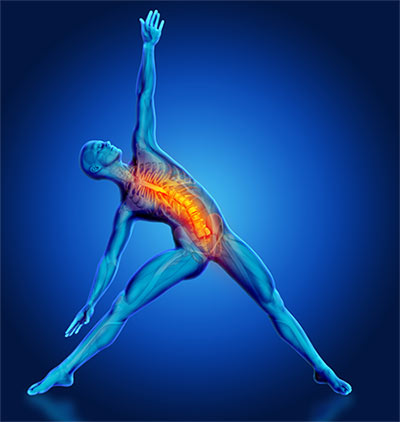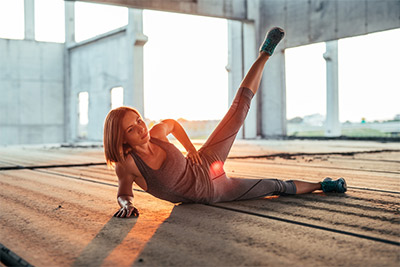
Lateral exercises are those that involve moving sideways. These often also involve using a single limb, whether that’s an arm or a leg.
Today we’re going to discuss why you’re not doing enough lateral exercise, why you should be, and how you can solve that problem. If you’re looking to maximize the benefits of your workouts, you’re going to want to stay with me on this one.
Joint Stability and Injury
Stabilizing a joint and keeping it healthy requires strength across a full range of motion. In case you missed it, that means stabilizing in all three dimensions.
Take the knee for example, it’s a hinge joint and you need to strengthen the whole range of flexion and extension. However, it also rotates and it can move sideways within a limited range, after which it’s at huge risk.
You can’t eliminate these risks, but you can reduce them. Strength in laterally-pressured situations and exercises offer a way of training this. It strengthens muscles, especially small stabilizers, to remain active and in-control during these strange movements. These are likely already weak.
However, it also strengthens the tendons and ligaments associated with lateral movements. The cruciate ligaments and the tendons above and below the knee require strengthening. It’s easy to overlook these tissues, because you can’t feel or see them, but they’re crucially important.
Lateral training means avoiding ridiculous injuries and being prepared for anything. Life tends to throw weird, sideways, unexpected injuries at you – and preparation can save you time and pain.
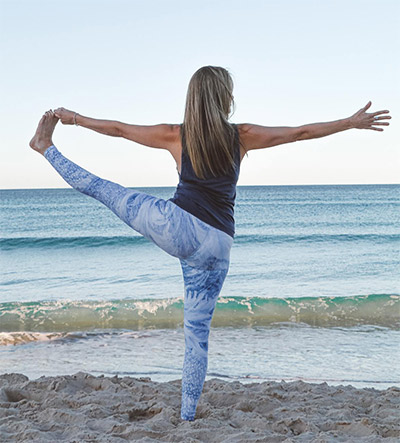
Unilateral Control
The ability to move one limb independently of its’ partner is also an important skill. This is relevant for both performance and injury prevention. If you can’t move well on one leg or with one arm then your overall control and balance in the body is lacking.
You don’t need to be a sprinter to benefit from single-leg work. If you’ve ever walked anywhere, you’re a unilateral human therefore you need to prepare in these ranges. Things like lunges can be progressed in a way that the weakest and strongest alike can benefit from them.
Lateral exercises, almost by their very definition, require us to develop unilateral control. They enforce standards of movement in single limbs that bilateral exercises (both limbs working together) simply don’t.
Once we remove symmetry from an exercise, we’ve made it more demanding in different ways. These are some of the most important ways you can improve your overall stability and control in ranges you might not otherwise have considered.
Rotation and Mechanics
The introduction of lateral exercise does not only mean unilateral exercise. It also means introducing a number of mechanics that you could quite easily be sleeping on in your other exercises, but which benefit both performance and longevity.
For example, the Cossack squat mentioned above is one of the best ways to ensure that the leading leg is being maintained in external rotation. This is important for its’ role in heavier and safer squatting, but also in reducing knee and ankle injury, and developing better strength in the hips and core.
This kind of rotation of joints is something you could easily miss with normal training, but also one of the most common areas for under-performing in the gym. This also applies to competitive sports.
Improving simple mechanics is something you’re never too good for, and it’s a benefit you can get while also building muscle mass and strength in the muscle groups you’re focusing on.
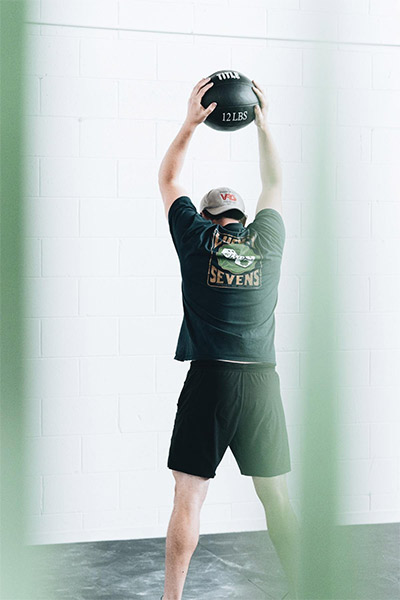
Balancing Weaknesses
There are many muscle groups in the body and many of them are underrated. These are the muscles that don’t do anything fancy and you probably can’t flex them. They’re the deep core muscles, the stabilizers for the shoulder blades, or the popliteus at the back of the knee, keeping everything in order.
These are easily overlooked in training and produce weakness. Weak links in the kinetic chain that you use for all your exercise. Your body has weak links you don’t know, and lateral exercise can be a great way to show this off … and fix it!
Working through a variety of unilateral, lateral exercises to develop smaller stabilizing muscles strengthens these weak links. Movements like Cossack squats do this with muscles like the adductors and external rotators of the hip-knee complex.
If you focus on variety of lateral movements, consistently, you’ll notice long-term, well-rounded strength gains. You’ll resist plateaus and you’ll be more specific and targeted in your strength, muscle, and health results!
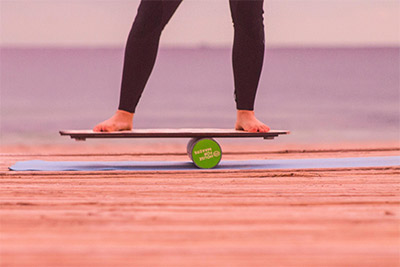
Challenge and Effectiveness With Little Equipment
One of the simpler reasons you might want to invest some time and effort into lateral exercise right now is that you’re bad at them and they’re challenging with almost no equipment.
In recent times, it’s become abundantly clear that we all need a back-up plan for exercise when life becomes unpredictable. Lateral exercises are some of the easiest to benefit from without any equipment, and can be optimized with very little loading.
Coming back to our Cossack squat example, most people can get serious work done with a light weight for higher reps. Maybe that’s holding your child or dog, maybe it’s a 16kg kettlebell you keep in your garage.
These exercises offer amazing bang for your buck – especially when you’re short on bucks and you’re just trying to keep progressing while you don’t have access to tons of equipment.
Laterals You Should Be Using
There are a few key exercises we think you should be using to improve lateral strength, stability, and resilience. We’ve outlined a few, but note that there are hundreds of possible choices out there and we’re not going to be able to cover all of them.
Look at every exercise for what it does and the various different benefits it provides. You don’t always need to load heavily, and often something as simple as the range of positive effects is enough to make a great exercise.
Cossack Squat
A great choice for building adductor strength, as well as improving control in the hips and knees!
This is the quintessential lateral lower body exercise and provides a wealth of benefits that you might otherwise be missing out on. These prepare the knees, while keeping hips healthy and supporting the stabilizers around both, which help prevent injury and build well-rounded strength.
Directional Lunges
Taking a lunge in a variety of angles (like a clockwork lunge) can really improve 3d knee and hip control. These will pay off in things like squats and other lunging exercises, as well as sport and activity.
This also forces you to practice extension in the hips, which is a great skill to practice. You’ll also need to use your core, improving core strength and control.
Side Bend
An awesome core exercise for the often-overlooked obliques. These are tied into spinal stability but are often ignored, while being crucially important for sports and healthy aging.
This improves core strength and you can even add a row/shrug at the top, a la Chinese weightlifting. This will keep it interesting and develop integrated movement with the core.
Leg Lifts
Developing strength in abduction is worth your time. Developing control in the hips sideways is the goal and you can combine leg lifts with clam shells to develop better rotation and abduction together.
Naturally, you can add a band to add resistance, but get the movement first! Strengthening this region will help with health but also to improve hip activation in squats, deadlifts, lunges, and running.
Side Plank
This is a great core exercise and can include dips and twists to add difficulty and improve results. This kind of progression is awesome so you can get in at any level and develop at your own pace.
It’s a great way of building total core strength, and it’s underated but fantastically useful. The side plank with twist could the most underrated core exercise.
Lateral Step Ups
Step ups are good – but doing them sideways may be better. Lateral step ups strengthen knee and hip control at deep ranges, where you tend to be weakest already.
This is especially useful for athletes, and developing the base strength for lateral box jumps!
Medicine Ball Circles
Long, arching circles overhead with a med-ball will provide great core and postural strengthening. It’ll also develop hip and oblique strength, which are great!
This is a stronger version of straddle toe touches or something like around the worlds. It’s about controlling the hips, core, and upper back – which means strength, but also integration in real world movement and control.
Skater Hops
This is a more challenging and high-impact exercise, so it’s for well-developed strength. However, once you’re safe, this is a great way of improving reactivity and control in landing. This is one of the most important factors in knee and hip health, so that’s a great benefit.
These are a fantastic way of preparing for difficult and uncomfortable exercises and sports. The overall benefits are well balanced and prepare you for the weird movements that sport, and life put you in!
Final Thoughts
Lateral exercise are underrated and under-trained by most people. Developing these movements means improving a lot of the things you’re weak at, that help support overall performance and muscular development.
There are no drawbacks to properly-using lateral exercises, and they can be amazing complements to ‘normal’ lifting and sports preparation. Strength is the foundation for everything from speed to endurance to power, so these lateral exercises offer a huge amount of value for time!
If you’ve tried any of these, let us know what you think, and if you think we’ve missed any awesome lateral exercises you like!


